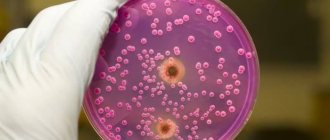Every insect is capable of protecting itself. Therefore, there is no point in asking the question: do bumblebees sting or not, because not every enemy can be intimidated by appearance alone.
Initially, leisurely insects are not aggressive. The bumblebee is conditionally dangerous for humans, that is, its attack occurs under a certain set of circumstances:
- a threat to the safety of the colony or a danger to a specific insect;
- mechanical destruction of the nest;
- the smell of oxidizing metal, perfume, alcohol from a person (and old fumes are perceived even more aggressively);
- the predominance of deep blue shades in clothing or the environment;
- sudden movements in close proximity to the insect.
Types of bumblebees and their bites
According to the biological classification, the bumblebee belongs to sessile-bellied insects from the bee family and has more than 300 species. Behaviorally, they are social insects that live in colonies and collect nectar from flowers.
Common types of bumblebees in Russia and the possibility of their bites:
- the purple bumblebee, also called the “carpenter,” is a black insect with violet-blue wings up to 3 cm in size. It is a non-aggressive species, but the bite of the blue bumblebee is quite painful;
- rock bumblebees – the body is covered with dark hairs, the abdomen is scarlet, size is 20-27 mm, they live in large colonies between stones, the bite of a black bumblebee can occasionally cause an allergic reaction;
- earthen - nests are made in the ground, sometimes abandoned mouse holes are used, the body reaches a length of 28 mm and has a black color with yellow hairs and stripes on the chest, females are larger in size than males and are equipped with a sting, the bumblebee bites only for self-defense;
- the garden bumblebee is the smallest (length 16-24 mm), the abdomen is colored yellow in front and behind, in the middle there are black hairs between the wings, colonies are located in hollows, old stumps and cracks in the ground.
Urban and field bumblebees are also distinguished.
On a note!
Typically, bumblebee colonies consist of 100-200 insects, but they are difficult to detect, because they camouflage and protect their nests well.
Types of bumblebees
Briefly about bumblebees
The bumblebee (lat. bombus) is a close relative of the well-known honey bee.
Genus - Hymenoptera, family - true bees. Biologists have described about 40 subgenera and 300 species of bumblebees. Habitat: wild nature of northern Eurasia, northern America, northern Africa.
Bumblebees are highly organized insects. They live in families with a clear hierarchy: queen, working females, fertilizing males; working individuals have nest builders and protectors, pollen getters, and “educators” of larvae. The bumblebee colony numbers about 170 individuals, but it is difficult to detect: the settlement is carefully guarded.
Biological features:
- in comparison with bees, wasps and hornets, the insect is large - the length of females is 12-32 mm, males - 8-25 mm (depending on the species);
- the color is yellow-black, there are black bumblebees and insects with yellow, orange stripes (which allows the insect to camouflage itself as the botanical parts of flowers);
- the wide body is densely covered with tiny hairs, so in the literature the bumblebee is rightly called “shaggy”;
- the insect has 6 legs, their tips are equipped with “baskets” for collecting and transferring pollen;
- flower nectar is the main food of the entire family; for the larvae, females prepare honey from pollen (more liquid than bee honey, not as sweet and fragrant);
- bumblebees sting with a stinger; for defense and attack, the oral apparatus is equipped with a pair of intersecting mandibles.
For humans, the benefits of bumblebees are great, but the harm is minimal. Representatives of the bee family pollinate vegetable crops, garden trees, and ornamental plants, increasing productivity significantly. A side effect is the seeds of weeds on the site (bumblebees carry them on their furry legs along with pollen).
Interesting! In recent years, domestic bees have been dying en masse from herbicides and pesticides. In this regard, bumblebees are very hardy, so in agriculture they are trying to domesticate these insects. True, the honey plants from bumblebees are mediocre, but the pollinators of agricultural crops are excellent.
Does a bumblebee have a sting?
The sting of bumblebees is present only on the body of working individuals (females) or on the uterus; it is smooth and has no serrations. Therefore, after a bite, the insect does not leave a sting in the body of the victim, as happens with bees.
Inside, the bumblebee sting (photo below) has an empty channel, like a needle in a syringe. At the moment the bumblebee bites, a microscopic portion of poison passes through this cavity. It consists of various components: fats and proteins, peptides, amino acids, aliphatic compounds.
Interesting!
Many people are interested in how many stingers this insect has and whether the bumblebee dies after being bitten. The peculiarity of the structure of the single sting is such that it does not cling to the skin of the victim, therefore there are no negative consequences for the insect’s body.
Complications and consequences
Serious consequences from a one-time bumblebee bite can occur if a person has an individual intolerance to some components of the poisonous substance or a very weak immune system. In this case, after a bumblebee bite, a sharp reaction of the body is observed in a matter of minutes. This may include chills, fever, dizziness, swelling of the whole body, and convulsions.
If there has been repeated administration of a toxic substance to insects over a short period of time, the toxic reaction is accompanied by dizziness, weakness, and irregular heart rhythm. In rare cases, anaphylactic shock is possible. Therefore, to avoid serious consequences, it is better to immediately consult a doctor for help.
Why is a bumblebee dangerous?
For most people who are bitten there are no consequences. However, those who are predisposed to allergies may experience an acute toxic reaction to the poison, since one of its components is serotonin.
Important!
With a second bite, the likelihood of an allergic reaction is much greater than with the first one, because the body of a person who has already been bitten once produces toxins to bumblebee venom.
A bumblebee sting is also dangerous for pregnant or lactating women and babies whose immune systems are not yet able to cope with the effects of toxins. Complications are possible if a bumblebee stings in the face (eyes, nose) or head: neck or ear. The ingestion of poison can cause swelling of the mucous membranes and disrupt their normal functioning.
A bite in the leg or arm, if the sting does not enter a blood vessel, usually does not have negative consequences, and swelling is possible only if the victim’s body is individually intolerant.
The most common areas that a bumblebee often stings or bites are:
- bite on the finger or hand when swatting away insects;
- foot bites occur when a person accidentally steps on a nest.
Relieving swelling
Bumblebee venom, once in the blood, spreads throughout the body. The immune system responds to a foreign substance by producing antibodies. They react with the toxin, resulting in the formation of new chemical compounds. They penetrate into the tissues, disrupt microcirculation, as a result of which fluid accumulates in the tissues - swelling is formed.
The best way to reduce swelling is to cool the affected area. You can also use folk or medicinal decongestants.
Does a bumblebee sting people and why?
Bumblebee bite
Unlike bees, bumblebees bite only in self-defense, attacking someone who poses a threat to him or is trying to destroy the hive or his family's supplies.
The following can also provoke an insect attack:
- pungent odor of cosmetics or perfumes, alcohol or fumes, oxidizing metal;
- blue color in clothing or sudden movements of a person.
Important!
The greatest danger is posed by multiple bumblebee bites, due to the large volume of toxins entering the blood, which can cause a severe toxic reaction, accompanied by disruption of the human cardiovascular and nervous system. There is also a possibility of death if anaphylactic shock occurs and the victim stops breathing.
Symptoms: pain, itching, swelling, skin rash and others
The local reaction manifests itself within the first minutes in the form of burning, itching and pain. Next, swelling occurs and the skin begins to redden.
A few minutes after the bite, a burning sensation, swelling, and redness of the skin occurs.
Such bite symptoms do not require specific therapy and disappear within 2–4 days. An allergic reaction develops within a few minutes, but passes within a few hours. Depending on the intensity, the following appear:
- Itching, swelling, redness of the whole body.
- Difficulty breathing, chills, increased heart rate.
- Skin rashes.
- Temperature increase.
Signs of toxic poisoning:
- nausea;
- vomit;
- dizziness;
- abnormal heart rate;
- weakness;
- loose stool.
Wintergreen (umbrella, ordinary, tincture) - description, medicinal properties, application
These symptoms appear only with multiple bites.
Symptoms and appearance of the bite
The local reaction to the bite does not depend on whether the sting is left. Many people don't know exactly what a bumblebee bite looks like or whether it stings more painfully than bees. The answers to these questions will be a description of the symptoms and consequences of bites.
Typically, non-allergic consequences of a bite are as follows:
- pain and discomfort in the bite area;
- constant itching and burning;
- tissue swelling and a lump-like lump, as seen in the photo of a bumblebee bite.
Bumblebee bite
The listed symptoms appear almost immediately. It is difficult to say exactly how long it takes before they decrease. They can remain for several days, and the next day the local reaction is likely to spread to adjacent areas of the skin. With strong scratching, the situation worsens.
Allergic manifestations may also not appear immediately due to the lack of antibodies to bumblebee venom in the victim’s body, but occasionally a strong immediate reaction is possible in case of individual intolerance.
Negative allergic symptoms:
- swelling and redness not only of the bite area, but of the entire body;
- severe itching, skin rash, blistering;
- toxic reaction: nausea, vomiting and diarrhea;
- breathing problems, suffocation;
- increased body temperature and severe chills;
- increased heart rate.
Very rare, but there is a possibility of anaphylactic shock, which is accompanied by dizziness, suffocation, convulsions and fainting. In such a situation, it is necessary to call an ambulance.
With multiple bumblebee bites, toxic manifestations of the body are possible:
- weakness and dizziness;
- nausea;
- heart rhythm disturbances.
If a bumblebee stings a pet
Stung by cats
You can suspect something is wrong based on your pet's restlessness. The animal itches, whines and growls, and may even gnaw at the affected area. It is not difficult to detect the site of the bite: the area is noticeably swollen.
Signs and manifestations resemble “human” symptoms: chills, fever, weakness.
Primary care is to relieve local inflammation:
- apply soda compresses (mushy consistency) to the bite site;
- You can relieve inflammation with an aqueous solution of vinegar in a 1:1 ratio. The method is not suitable if the bumblebee has caused harm to the animal’s mucous membranes;
- If the pet categorically does not accept soda and acid, you need to apply a cool compress to the wound. Cold will relieve pain and eliminate swelling.
The above recommendations are temporary measures. If a bumblebee stings an animal, you should not experiment with pharmacological drugs. The animal should receive basic treatment from a veterinarian.
First aid for a bite
Treating a bumblebee bite
The most important question that interests many people is: how to treat bumblebee bites. Actions usually depend on the severity of the consequences of the bite:
- If a sting is visible in the bitten area, it should be pulled out with tweezers, previously disinfected.
- Then this area must be anointed or treated with an antiseptic by applying a swab with alcohol, hydrogen peroxide or a solution of potassium permanganate; there is no need to make efforts to squeeze out the poison so as not to introduce infection into the wound.
- Applying a cold compress will help reduce swelling and relieve pain.
- Drink an antihistamine to relieve a possible allergic reaction, even if there is no predisposition to it: Suprastin, Erius, Zodak, etc.
- In the following hours, it is necessary to increase fluid intake (water and tea with sugar), which will reduce the likelihood of a toxic reaction.
- If the patient's condition worsens, it is better to call a doctor.
When stung by a bumblebee, it is prohibited:
- try to slam or crush the insect, because toxic substances released will attract the rest of the colony;
- comb the bitten area;
- take sleeping pills or alcohol.
On a note!
To prevent the poison from spreading to adjacent areas of the skin, it is necessary to avoid scratching and rubbing in the area of bumblebee bites. It is also not recommended to consume alcoholic beverages and take hot baths, as this can cause vasodilation and a wider distribution of toxic toxins in the victim’s body.
Symptoms
It is very important to immediately determine the presence of poison in the body by symptoms, because allergies often occur in people. Allergy sufferers can suffer serious damage from such bumblebee stings, including death.
If poison gets in, the affected area will turn red and itch. For a person who does not have allergies, only numerous bites can pose a serious danger. If it does exist, then the symptoms should be as follows:
- Itching, redness throughout the body, and not just where the bite was made;
- Nausea, vomiting;
- Difficulty breathing, attacks of suffocation;
- The pulse quickens, the body temperature rises;
- Loss of consciousness, convulsions, the victim from the outside looks like a person who has seen a nightmare.
For a person with allergies, it is important to receive first aid in time to avoid dangerous health consequences. Therefore, it is necessary for everyone to understand exactly how to help a person who has been stung.
Treatment and pain relief for bites
Treatment of insect bites
At home, treatment should be carried out with herbal or medicinal remedies to relieve discomfort and pain:
- antiseptics: iodine, alcohol, hydrogen peroxide, Mirasmistin;
- gels that help relieve inflammation, itching and burning: Fenistil, Advantan;
- homeopathic medicines are taken to prevent an acute reaction of the body to bumblebee venom: Apis Mellifica, Urtica Urens.
Help with a bite in the face or eye area: rinse the mucous membrane of the eye with strong tea (better to cool), you can apply a tea bag, which will help relieve swelling and soothe.
To treat the consequences of a bumblebee bite, folk remedies are also used:
- compresses made from fresh plantain, parsley, dandelion leaves;
- treatment with a solution of baking soda, which is applied in a mushy state to the bitten area;
- raw potatoes, a slice of cucumber, apple or tomato;
- freshly squeezed lemon juice mixed with vodka;
- chopped onions;
- frozen milk cubes;
- chilled olive oil for lubricating the skin;
- mixture 1 tsp. honey and 1 head of garlic;
- aloe leaf, from which you need to remove the skin and apply the pulp to the painful area;
- a paste of crushed tablets of activated carbon or validol with water.
Herbal infusions and decoctions that help remove bite marks and reduce negative sensations:
- a mixture of dried chamomile and calendula flowers: a decoction is made that can be used to wipe the bitten area and drink as a sedative;
- basil: 3 tsp. pour a glass of boiling water, boil for 5 minutes, then cool and take 1 tbsp orally. l 3 r. per day and for lotions;
- calendula infusion: 1 tbsp. l of herb per 200 g of alcohol (70%), leave for 3 days, then dilute 1 tsp per 50 g of water, and soak the fabric with the resulting solution and make lotions.
First aid for victims who have an allergy and swelling after a bee or bumblebee sting
Treating the local reaction and treating the wound for people with a specific reaction will not be enough.
Allergies can lead to anaphylactic shock, which develops very quickly and can progress to death, so it must be taken seriously.
Assistance must be provided immediately to avoid complications; it is best to show the patient to a specialist.
Taking antihistamines. It is much better if the medicine is administered intramuscularly or intravenously as an injection. The sooner the remedy begins to act, the less likely it is to develop edema.
The drug will help avoid the development of allergies to other organs. Special attention should be paid to the issue of how to relieve swelling and swelling.
Edema is the accumulation of fluid in the intercellular space, which leads to disruption of the normal functioning of organs. When a bumblebee or bee stings a person, the poison is released into the body, which contributes to the appearance of a tumor. It can last for several days and cause not only physical discomfort, but also cosmetic discomfort.
To relieve swelling, you need to apply a cold compress, take antipyretic drugs and anti-inflammatory drugs. In addition, the patient should remain in bed, periodically raising his legs so that the swelling subsides.
If the tumor rapidly spreads throughout the body and cannot be treated at home, you need to consult a doctor who will prescribe the necessary examination.
- If you have a first aid kit at hand,
then the area of skin that was stung by a bee can be pricked around with adrenaline and saline solution in a ratio of 1:10, respectively. It is prohibited to administer more than 0.5 ml at a time. - After providing assistance, the victim
must remain under the supervision of a medical professional; most likely, he will be prescribed hormonal medications, which should be taken until all symptoms completely disappear.
Folk and improvised means
What to do at home if you don’t have access to a large amount of medicines and there is no possibility of calling an ambulance in the near future.
Some drugs and solutions can be replaced with products that are found in almost every apartment.
So, instead of disinfectant solutions, you can apply the following to the bite site:
- a tampon soaked in vodka;
- wet refined sugar;
- gauze soaked in dissolved activated carbon;
- soda slurry.
You can relieve pain with:
- dissolved aspirin tablet;
- vegetables or fruits cut into slices: apples, cucumbers, onions;
- compress with acetic or citric acid.
In addition to all this, if you are stung by a bumblebee or a bee, all kinds of lotions using medicinal plant materials will help relieve swelling and inflammation: mint, dandelion, garlic, aloe, parsley.
Since when bitten, the human body is poisoned and, trying to get rid of the poison, loses a lot of fluid, you need to take a large amount of water. An excellent substitute would be infusions of chamomile, St. John's wort, calendula or sage.
Chamomile tea recipe.
Add one teaspoon of dried chamomile inflorescences to one large 250 ml mug. Cover and leave for 10 minutes. Take 3 times a day on an empty stomach.
Cabbage compress for swelling.
Remove the veins from a leaf of large white cabbage, mash it slightly until the juice appears and apply to the swollen area. Secure with gauze or bandage, preferably overnight.
Mint leaf lotion.
Pour two glasses of water into a small saucepan, place on the stove and let the liquid boil. After this, add two tablespoons of mint and cook over low heat for five minutes. Let the infusion cool. Moisten a cotton swab and apply it to the bite, this will help relieve inflammation.
When a doctor's help is needed
Consequences of a bite
It is necessary to seek medical help in situations where:
- multiple insect bites;
- a bumblebee has bitten a child, a pregnant woman or a person prone to acute allergies;
- the bite site is on the face, near the eyes or mouth;
- there are symptoms of acute toxicity of the body;
- the wound at the site of the bite became infected and suppurated.
Who are bumblebees: structure, life cycle and differences from bees
These representatives of the family of true bees belong to the order Hymenoptera.
There are about 300 varieties of them in the world. The most common types of bumblebees: purple (carpenter), stone, garden, earthen. They come in medium and large sizes. The female grows to 13–28 mm in length, the male has smaller dimensions – 7–24 mm. The most common color of bumblebees is yellow and black stripes. There are also individuals with red and orange stripes. Some of the insects are black and lack stripes. The colors of bumblebees are presumably due to mimicry and thermoregulation.
The female's head is elongated with a wide rounding in the occipital region. The upper lip has the shape of a rectangle, the mandibles are strongly curved, and when brought together they overlap. There are 3 convex grooves on their outer surface. The abdomen is not folded at the apex; there are no ridges on the sides of the sixth abdominal sternite (the ventral part of the segmental ring). On the outside, the hind tibiae are shiny and smooth and form a basket for collecting pollen. It looks like a platform surrounded by hard, straight hairs.
How to prevent bumblebee bites
If bumblebees appear in the house, you should remove them. To prevent them from biting, you must adhere to the following precautions:
- Do not try to catch or touch the insect, do not wave your arms near it.
- Try to avoid places where bees and bumblebees gather (fruit at the market, etc.).
- Place mosquito nets on the windows in the house.
- Do not eat sweet foods on the street.
- During a country trip or picnic, do not wear bright clothes and do not use perfumes with strong aromas.
If trouble does occur and the bite cannot be avoided, then the recommendations given will tell you what to do if you are bitten by a bumblebee: how to treat it and when to see a doctor.
Prevention
An attack can be avoided if you do not touch, do not approach the insect and its home, and avoid them in every possible way. If a bumblebee lands on a person, you should not drive it away or touch it with your hands. It is not recommended to walk barefoot in places where ground bumblebees could make a home for themselves. Sharp, impetuous movements and a loud cry will cause the bumblebee to defend itself and sting. He is attracted to bright colored clothes, perfume compositions, and the smell of alcohol. In summer it is not advisable to eat outside. The insect loves sweets and can fly to the smell of fruits, ice cream, and carbonated drinks. Mosquito nets on windows and mesh curtains in doorways will protect against penetration into the house. When planning an outdoor holiday, it is recommended to take a first aid kit, making sure that you have antihistamines.
The reaction to a bumblebee bite can be varied and expressed with varying intensity. For many adults, a single sting does not pose a serious danger, but first aid must be provided to the victim. People at risk should pay special attention to signs of complications and, if possible, consult a doctor.
Types of bumblebees according to the toxicity of their poison
Over 300 species of these hymenopteran insects are known, and they are distributed throughout the globe. The exceptions are most regions of Africa and Australia. Bumblebees do not bite unless you touch them; they are peace-loving insects, but their venom is more toxic than that of bees.
The strength of the poison on the human body largely depends on the type of insect:
- Common bumblebee It has a black body with two yellow stripes on it. It nests in the ground and is a very rare member of the insect family, found only in western Europe and is a protected species.
- Forest. The smallest representative of the insect family under discussion. It also has less bright colors compared to other types of bumblebees. Their nests of moss and grass are found on the surface of the earth. Also, representatives of this type of insect inhabit abandoned rodent burrows.
- Purple bumblebee carpenter, a colorful insect, has a beautiful blue-black color and indigo wings. But he refers to bumblebees only by their names, which are given due to their external similarity. In fact, they are bees; their nests can be found in dry wood.
- Garden, a very large representative of this family of insects. The length of the female is about 25 mm. The color is bright and expressive, consists of three colors - black, yellow and white. For nesting, it occupies abandoned mouse holes.
- Earth bumblebee has a yellow stripe on the chest and a white tail. Female bumblebees reach a length of 19–23 mm.
Does a bumblebee attack a person?
What does a bumblebee look like?
Seeing a large bee-like insect, many people get scared, not knowing whether bumblebees bite people. On their own initiative, they do not attack a person unless there are aggressive actions on his part. Having seen a bumblebee nest near their home, many try to get rid of the insect, not only by fumigating them with smoke, but also by destroying the “houses”.
Note! You should not try to catch bumblebees with your hands. Even the male is able to stand up for himself, biting through the palm with his sharp jaws.
Can a bumblebee bite a person on its own initiative? This is possible in 2 cases:
- if the clothes are blue, for some reason this shade is dangerous for insects; therefore, one can expect an inadequate reaction; although the sting practically does not pierce the fabric itself, the insect can injure an open area of the body;
- Bumblebees are aggressive towards the smells of alcohol, fumes, perfumes and tobacco; this can become a reason for an attack by a whole swarm of insects that find themselves in close proximity.
Sometimes bee relatives are irritated by the smell of oxidized metal. This “aroma” of the body arises from constantly wearing watches with bracelets and jewelry. The metal oxidizes under the influence of sweat secreted by the skin, which is quite typical for the hot season.
Bumblebees are also attracted by the smell of fried meat, watermelons, melons, and sweet drinks. Therefore, it is not recommended to have picnics near insect homes, so as not to brush off the annoying invasion later. This unnerves the bumblebees and can become a reason for an attack.
Bumblebees are also attracted by the smell of fried meat, watermelons, melons, and sweet drinks.
If a person does suffer, it is advisable to take immediate action, even if there is no tendency to allergies:
- apply fresh parsley or plantain leaf to the injured area, changing the compress every 2 hours until the swelling subsides;
- Dressings with pieces of apple, raw potatoes, onions mixed with honey help well;
- you can periodically treat the wound with lemon juice;
- Traditional healers recommend making compresses with soda solution, activated carbon slurry or validol.
If the bite is in a sensitive area (for example, in the eye area), it is better to use cold compresses or ice cubes. This will help relieve pain, relieve swelling and slow down the absorption of poison.
Additional Information. A compress using refined sugar moistened with water can remove bumblebee toxin from a wound.
You should not drink alcohol after a bite - alcohol will only intensify the allergic reaction. But hot sweet tea and plenty of liquid will be welcome.
In some cases, it is more rational to seek medical help:
- if several bumblebees are stung at once;
- when the bite was in the throat area, oral mucosa or eyeball;
- if an elderly person or child is injured;
- in the presence of severe pain, swelling, suppuration and chills.
Note! If the victim is allergic, after contact with a bumblebee you should not wait for the body’s reaction, but immediately consult a doctor.
It is most dangerous if there was not just one bite, but several individuals attacked
It is most dangerous if there was not just one bite, but several individuals. In this case, the amount of poison entering the body from the sting increases many times, and the internal systems have difficulty coping with intoxication.
Such situations are rare, because bumblebees usually do not attack in a flock. More often this happens if there have been attempts to destroy the insect nest. Even when it was accidentally touched, bumblebees will not figure it out; their self-preservation instinct turns on.
You should not hunt for wild honey produced by bumblebees - its taste is in many ways inferior to that of bees. But attempts at such penetrations can have disastrous consequences.
Whether a bumblebee stings or not, first of all, it depends on the people themselves. It is enough to keep your distance from these insects and not provoke contact with them. Bumblebees should not be harassed, given their value to nature - they are excellent plant pollinators. Experienced summer residents even deliberately breed a swarm next to greenhouses and hotbeds.
Does a bumblebee sting or bite: the difference
Black shemale
When faced with an insect and receiving an unpleasant sting, they say that a bumblebee has bitten. But is this statement correct? Do bumblebees sting or do they still bite? Both expressions can be considered true if you specify which individual you encountered.
The male, naturally, cannot sting due to the absence of this organ. This, as stated above, is the prerogative of females. They are always more aggressive.
But male bumblebees are not so harmless - they have powerful mandibles. They actively use these jaws to obtain food for themselves. In case of danger, males defend themselves with them. But this bite is not as dangerous as the impact of a sting, since it is not poisonous.











